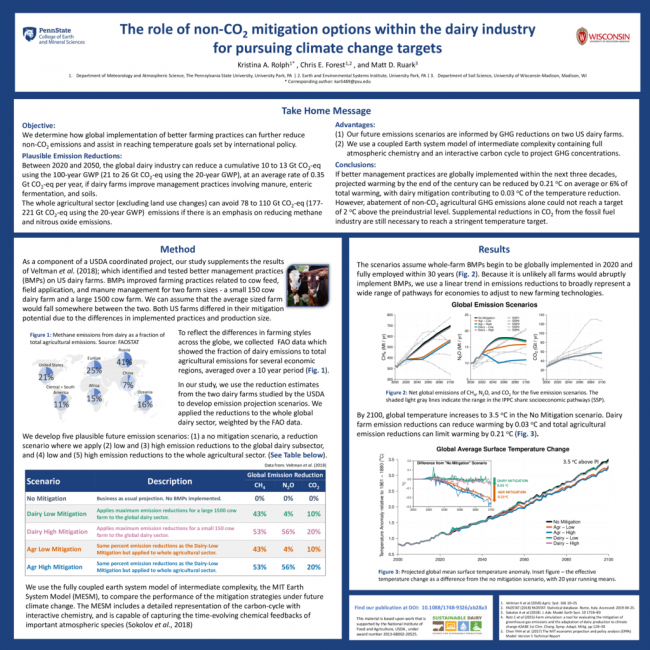Mitigation of non-CO2 climate forcing agents must complement the mitigation of CO2 to achieve long term temperature and climate policy goals. A large share of global non-CO2 greenhouse gas emissions is attributed to agriculture, with a significant contribution related to dairy production. As demonstrated by the results of a recent USDA coordinated project, Dairy-CAP, dairy farmers can significantly reduce their greenhouse gas emissions by implementing beneficial management practices (BMPs). This study assesses the potential mitigation of projected climate change if greenhouse gases associated with the dairy subsector were reduced. To compare the performance of several mitigation measures under future climate change, we employ a fully coupled Earth system model of intermediate complexity, the MIT Earth System Model. With an interactive carbon-cycle, the model is capable of addressing important feedbacks between the climate and terrestrial biosphere impacting greenhouse gas concentrations. We illustrate the importance of ongoing mitigation efforts in the agricultural sector to reduce non-CO2 greenhouse gas emissions towards established climate goals. If BMPs are implemented globally within the next three decades, projected warming by the end of the century can be reduced by 0.21 °C on average or 6% of total warming, with dairy farm mitigation contributing to 0.03 °C of the temperature reduction.
Day
Tuesday Poster Session
Related Conference Themes
Food


